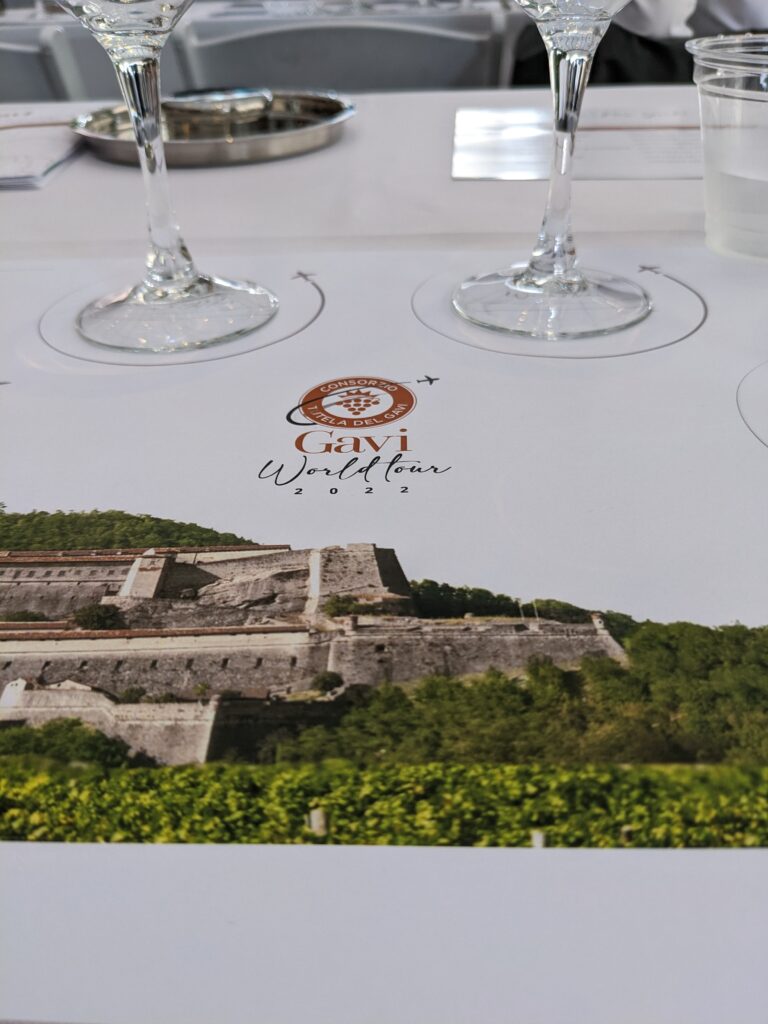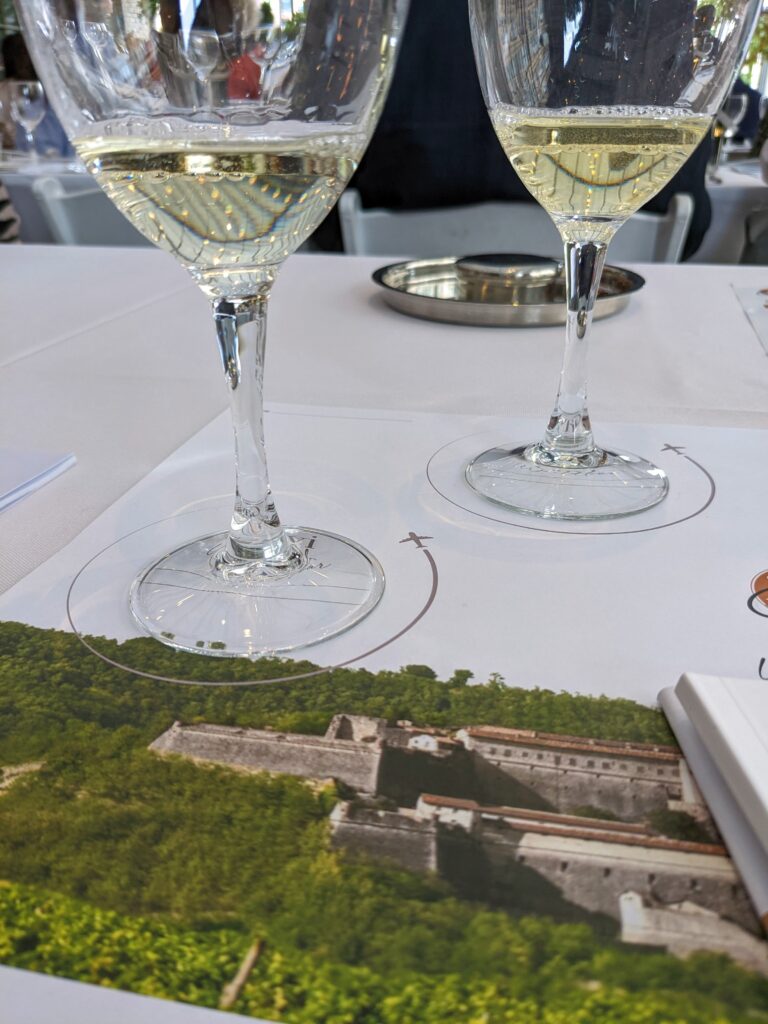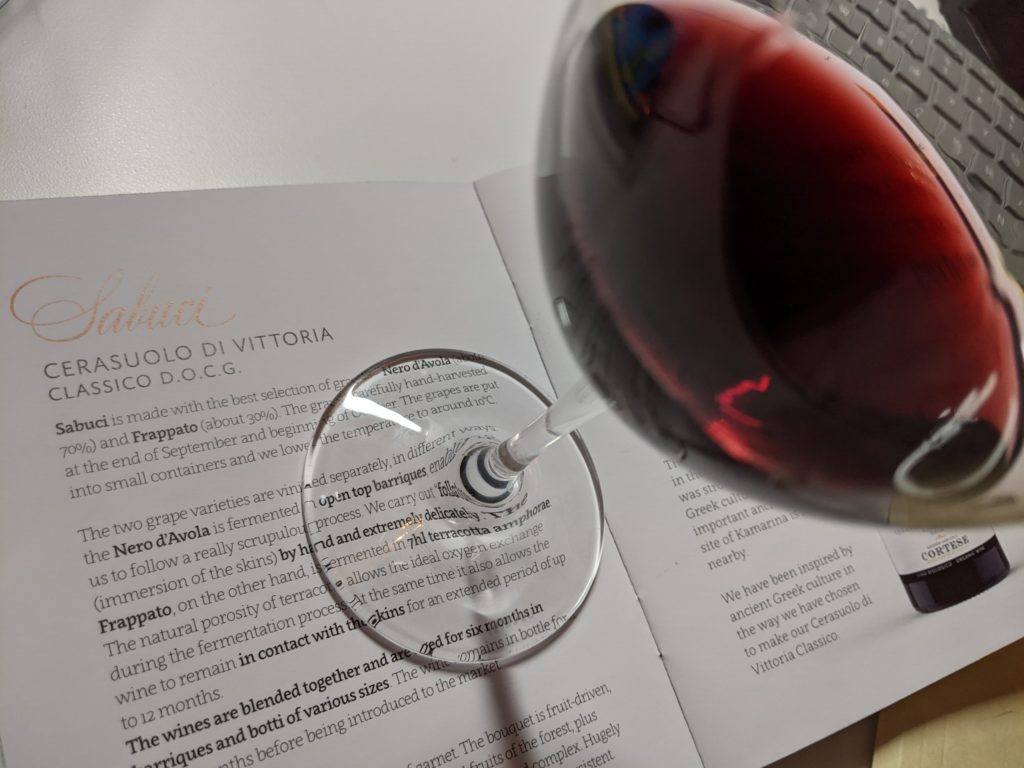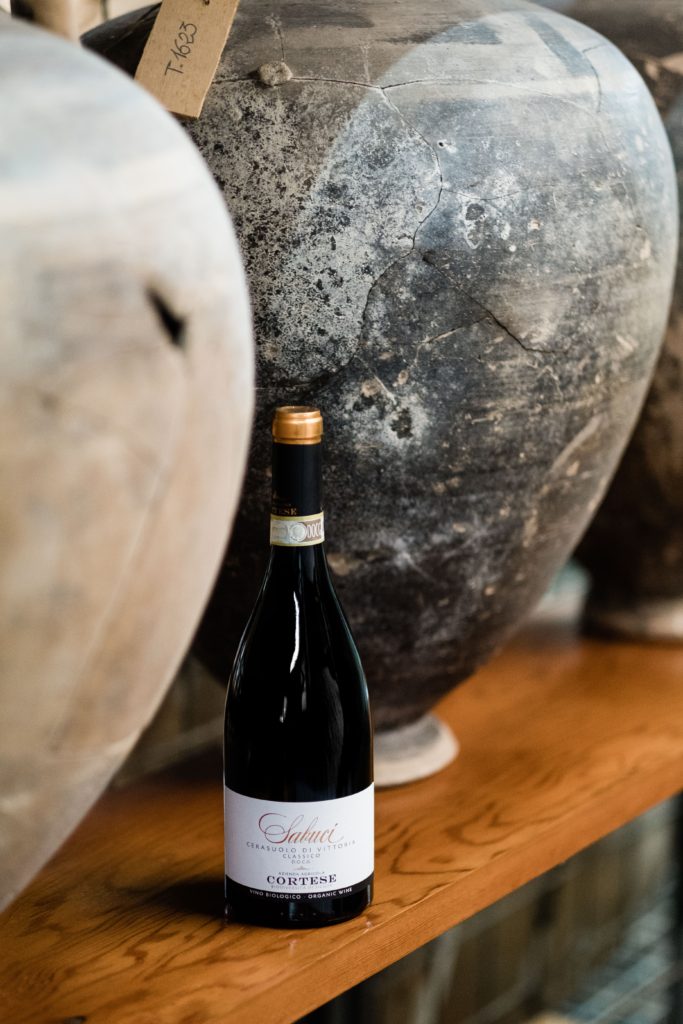
Looking for a new (to you) white wine? While certainly not new – grapes have been grown in the region since 972 CE and specific mention of it dates to 1782 – Gavi is perhaps less well known, but definitely worth getting to know. In fact, at a recent seminar, “The Hidden Depths of Gavi: Ageing Potential of Piemonte’s Great White “, moderator Walter Speller suggested that Gavi can “play at the level of Chablis.”
Produced from 100% Cortese grapes, the wine hails from southeast Piedmont, Italy (the same region known for Barolo and Barbaresco as well as Moscato d’Asti). This high-quality wine benefits from the continental climate where it can fully ripen in the hot, sunny summers, yet maintain bright acidity thanks to the coastal marin wind.
This great grape can be produced in several different styles, all while keeping within the rules and regulations of the Gavi Consorzio: Still (which represents 99% of all production); Semi-Sparkling (Metodo Classico, with six months aging on the lees); Fully Sparkling; and Riserva. In addition to adhering to lower yields, these latter wines must be aged for one year, with at least six months of that spent in the bottle.
Established as an official denomination in 1974, Gavi was promoted to DOCG in 1998. Yet, more historically, Gavi played an important role in trade. First firmly rooted in the Roman empire, the area was home to Libarna, which was founded in 2nd century BCE as an agricultural and viticultural city. Later, it became crucial to the Republic of Genoa, which served as a defense post and was instrumental in the salt route. The Genovese needed a wine that could be shipped from place to place and being due north of Genoa in the Alessandria province, Gavi became that wine.

More critical than its geographical proximity, Gavi was an especially good choice thanks to its stability. As a white wine with far less polyphenols – especially catechins – than others, it could be shipped to other areas without fear of damage to the wine.
Today, there are 1600 hectares cultivated within the Gavi borders, accounting for 60% of all Cortese planted within Italy. The vines are dispersed among 11 municipalities in the foothills of the Po Valley, some of which are designated as crus. There has also been an increasing focus on single vineyards as the producers seek to better understand their terroir. In this regard, they recently completed a comprehensive map of the territory.
Additionally, sustainable practices have been embraced by the Consorzio with an aim toward promoting organic viticulture and preventing erosion. This commitment has been further reinforced by its 2018 initiative, which monitors bee pollen to measure whether sustainable viticulture is actually being practiced in the region.
Within the area, Cortese thrives on the combination of red clays, white soils, with marl and sandstone, which display as minerality in the wines. In general, these are fresh, elegant white wines, known less for fruit and more for their floral, nut (almond) and mineral characteristics. Most of the wines are fermented in stainless steel, but a few producers do use wood and there has been an emphasis on indigenous yeasts since 2015.
Although the majority of white wines are meant to be enjoyed in their youth, Cortese is a grape that can sustain the test of time. In particular, thanks to the same chemical components that make them stable for shipment, these are wines that can develop beautifully with eight to ten years of age, yet still retain vibrant acidity. As evidence, the wines tasted at the above referenced seminar hailed from vintages 2013-2019 and all showed quite well.
VINTAGE CHART
2021 – 5.0 stars
2020 – 4.5 stars
2019 – 4.5 stars
2018 – 4.5 stars
2017 – 4.0 stars
2016 – 5.0 stars
2015 – 5.0 stars
TASTING NOTES
La Raia Vigna della Madonnina 2019 Gavi DOCG Riserva
Acquired by Giorgio Rossi Cairo and his family in 2003, La Raia is an organic and biodynamic property, with Demeter certification. Aged in stainless steel, with one year lees aging, this fresh wine displays apple, slight citrus and mineral notes, with high acidity, medium to full body and long length.
Tenuta La Giustiana Montessora 2018 Gavi DOCG del Comune di Gavi
Founded in 1250, Tenuta La Giustiana is one of the oldest and historic estates. Montessora is a single vineyard. This is beautiful wine with wet stone, lanolin, orange peel aromas. It is dry, with medium+ acidity, medium+ body, along with depth and richness and a hint of chalk in the finish, with long length.
Morgassi Superiore Volo 2018 Gavi DOCG del Comune di Gavi
Established in 1993, this small estate is family run, currently under the direction of sisters Marina and Cecilia Piacitelli. The wine is very tart, with lemon and mineral aromas and flavors, along with medium+ body, high acidity and good length.
La Mesma Vigna della Rovere Verde 2016 Gavi DOCG Riserva
Also a family affair, La Mesma is run by the Rosina sisters: Paola, Francesca and Anna. Notes of pear and apple greet the nose. The palate is dry, with full body, slight tidal pool notes and minerality, culminating in long length.
Tenuta San Pietro in Tassarolo Il Mnadorlo 2015 Gavi DOCG del Comune di Tassarolo
Named for the Benedictine convent that was located on the property in the 11th century, Tenuta San Pietro, the estate was purchased in 2002 by Corrado Alota, a Milanese entrepreneur. Hailing from a warmer vintage and with seven years of age on it, this wine displayed beautiful development with almond and caramel aromas. On the palate, it is rich and concentrated, with medium acidity, full body, and notes of peaches, beeswax, petrol and hazelnuts.
Villa Sparina Monterotondo 2014 Gavi DOCG del Comune di Gavi
Winner of Wine Enthusiast’s European Winery of the Year for 2021, Villa Sparina has been producing Gavi since 1970. With grapes sourced from their cru, Monterotondo, this wine is intense, with a rich nose redolent of pear and showing some development. It is full bodied, with slight hints of woodiness, peaches and long length.
Bergaglio Nicola Minaia 2014 Gavi DOCG del Comune di Gavi
This estate has been making wine since 1945 and is run by the son and grandson of founder: Jean-Luigi and Diego Bergalo. Sourced from grapes grown on the hilly Minaia site, situated directly behind the family cellar, the wine offers up honey, floral and lemon aromas and flavors with medium acidity, medium body and long length.
Broglia Bruno Broglia 2013 Gavi DOCG del Comune di Gavi
The Bruno Broglia acquired his historic estate – La Meirana – in 1972, which is now managed by his sons, Gian Piero and Paolo. With a commitment to modern technology, it was the first estate to collaborate on clonal research related to the Cortese grape and it continues to conduct other studies in concert with local universities. Despite being nearly a decade old, this wine is surprisingly fresh. It provides notes of citrus and mineral, with an undercurrent of anise, with good acidity, medium body and long length.



